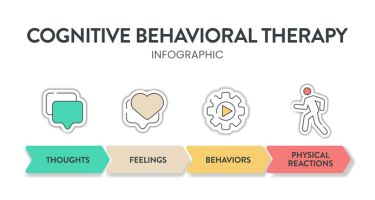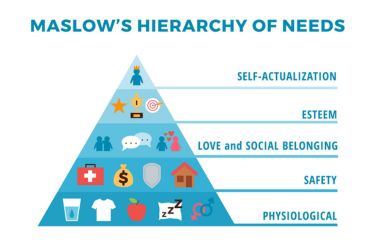Hypnosis is more than a stage trick or a mysterious act—it's a carefully studied method in psychology that can help with mental health and wellbeing. Research shows hypnosis can be effective for managing pain, reducing anxiety, and improving sleep and emotional balance. Many people are surprised to learn how strongly hypnosis is rooted in scientific practice and how it supports therapeutic outcomes.

As we explore hypnosis, we'll look at how it works in the brain, why it helps some people more than others, and what the latest science says about its place in mental health care. Our goal is to give clear, practical information so we can all understand what hypnosis offers for our minds and bodies.
Key Takeaways
- Hypnosis is a valid and evidence-based approach in psychology.
- It is used to support mental and physical health in various ways.
- Current research helps guide safe and effective use of hypnosis.
Understanding Hypnosis and Its Role in Psychology

Hypnosis is a topic that connects psychological processes with brain function and mental health treatment. Its study helps us understand how suggestion, attention, and subconscious processes can influence behaviour and wellbeing.
Definition and Mechanisms of Hypnosis
Hypnosis is a psychological technique used to create a trance-like state. In this state, we experience deep relaxation, heightened focus, and a greater openness to suggestion. Unlike sleep, we stay aware and can respond to instructions given by a hypnotist or even by ourselves in self-hypnosis.
The hypnotic state involves changes in the brain, especially in regions linked to attention and control, such as the anterior cingulate cortex. During hypnosis, our conscious and subconscious minds interact more closely. This makes it possible for certain ideas or instructions to influence thoughts, emotions, or behaviours more directly.
Clinical hypnosis is often used as a tool during therapy. It can help manage pain, anxiety, and other mental health challenges by allowing us to access and change automatic patterns in the subconscious mind. Studies show that clear instructions and trust between participant and hypnotist are important for hypnosis to be effective.
The Hypnotic State and Suggestibility
In hypnosis, we enter a distinct mental state marked by focused attention and reduced awareness of distractions. This state is sometimes described as a trance or trance-like state. We become more responsive to suggestions, which is called suggestibility.
Suggestibility varies from person to person. Some of us enter this state easily, while others may find it more difficult. When suggestible, our minds are open to positive change, such as reducing pain or anxiety, breaking harmful habits, or improving confidence.
Research using brain scans has shown that the prefrontal cortex and anterior cingulate cortex are involved in controlling attention during hypnosis. These areas help filter out competing thoughts so we can respond more directly to suggestions. This is part of why hypnosis can feel different from our ordinary waking state.
Historical Evolution of Hypnosis in Psychology
Hypnosis has a long and complex history in psychology and medicine. Early forms date back centuries and were often associated with mystical or spiritual practices. In the 18th and 19th centuries, figures like Franz Mesmer and James Braid began to investigate hypnosis scientifically, moving it away from superstition.
By the late 20th century, hypnosis gained acceptance in mainstream psychology as advances in research showed real effects on the mind and body. Modern studies use brain imaging and controlled trials to understand and improve hypnotic techniques.
Today, hypnosis is used alongside other therapies for mental health issues, pain management, and behavioural change. Its acceptance continues to grow as we uncover more about the brain mechanisms that underlie the hypnotic state and suggestibility.
Therapeutic Applications of Hypnosis in Mental Health

Hypnosis and hypnotherapy offer several proven tools for mental health treatment. These approaches are supported by research showing benefits for anxiety, depression, post-traumatic stress disorder (PTSD), phobias, and unwanted habits.
Hypnotherapy for Anxiety and Anxiety Disorders
Hypnotherapy can be useful in managing anxiety and related disorders. Through guided relaxation, deep breathing, and positive suggestion, clinical hypnosis helps individuals gain control over their anxiety response.
We often see reduced symptoms in generalised anxiety, social anxiety, and panic attacks. Research also supports the use of hypnosis interventions alongside traditional therapy for stronger results. For example, hypnotherapy can help calm physical symptoms such as a racing heart and tense muscles.
In practice, hypnotherapy works by decreasing negative thought patterns and promoting a sense of safety. Sessions can teach coping skills, helping individuals feel more in control during stressful situations. As an adjunct to cognitive behavioural therapy (CBT), hypnosis often leads to quicker improvement in daily functioning.
Hypnosis as an Adjunct for Depression
Clinical hypnosis is not a stand-alone cure for depression, but it works well as an add-on to other treatments. We use hypnosis to help clients change negative beliefs and patterns linked to low mood.
During sessions, hypnotic techniques promote deep relaxation and mental focus. This helps people access and reshape unhelpful thoughts. Studies suggest hypnosis interventions can enhance the impact of psychological therapies for depression.
We often guide individuals through exercises that increase self-esteem and motivation. Hypnosis may also help address secondary symptoms such as sleep problems. By encouraging positive imagery and self-talk, hypnotherapy can support recovery and reduce the risk of relapse.
Hypnosis in the Treatment of Post-Traumatic Stress Disorder
Hypnosis is a valuable tool for treating post-traumatic stress disorder (PTSD). It allows clients to access traumatic memories in a safe and controlled way. Through hypnotic work, we can help reduce the power of distressing memories, flashbacks, and nightmares.
Clinical hypnosis promotes relaxation and emotional safety. This is especially important for individuals with trauma, who often find it hard to relax. Hypnotherapy interventions can also teach calming strategies to reduce hyperarousal and improve sleep.
Some techniques involve guided imagery or safe “distance” from painful memories. Hypnosis is often used alongside traditional therapies such as trauma-focused CBT or EMDR. This combination can lead to better symptom management and improved day-to-day life.
Utilising Hypnotherapy for Phobias and Habits
Hypnotherapy is widely used to treat phobias and to break unwanted habits such as smoking or overeating. We often start with relaxation and suggestion to address the fear response or automatic behaviour.
For phobias, hypnosis helps clients face triggers gradually, building confidence and reducing avoidance. Techniques may include visualisation exercises and positive reinforcement. Research shows that clinical hypnosis can shorten treatment times compared to standard interventions.
For unwanted habits, such as smoking or certain eating disorders, hypnotherapy targets the subconscious motivations that keep the behaviour going. By re-framing beliefs and providing alternatives through suggestion, we support lasting change. In many cases, hypnotherapy serves as a supplement to behavioural therapies for a more comprehensive approach.
Hypnosis for Somatic and Physical Health Conditions

Hypnosis has been shown to help manage different types of somatic and physical health issues. Its role in pain relief, symptom control, and the management of certain chronic conditions is supported by research and clinical experience.
Pain Management and Chronic Pain Relief
Hypnosis can be a useful tool for pain management in various situations, including postoperative pain and chronic pain conditions like arthritis, fibromyalgia, and migraines. By guiding us into a focused, relaxed state, hypnotherapy helps change the way we perceive and respond to pain.
Clinical trials and meta-analyses have shown that people who use hypnosis often report less pain and distress. For chronic pain, hypnosis is not usually a cure, but it offers a way to reduce the sensation and impact of pain. Some common techniques include guided imagery, relaxation, and direct suggestions that help us change our thoughts and feelings about pain.
We may also use self-hypnosis techniques to better manage daily pain or discomfort without medicine. This allows for greater control and sometimes reduces the reliance on painkillers, which can have side effects.
Hypnosis in Childbirth and Menopause
Hypnosis has gained attention for its ability to ease discomfort and anxiety related to childbirth and menopause. Several studies highlight that hypnotic methods can reduce the need for pain relief medication during labour.
During childbirth, hypnotherapists teach relaxation and mental focus exercises, which help us stay calm and may shorten labour. Women also report feeling more in control and less afraid.
In menopause, hypnosis has shown promise in managing hot flushes and improving sleep. According to reports, women practising hypnosis experienced fewer and less intense hot flushes, leading to better daily comfort. Guidance from healthcare professionals, including resources from organisations like the North American Menopause Society, support these uses as part of a complete treatment plan.
Hypnotherapy for Gastrointestinal Disorders and IBS
Hypnosis offers a non-drug approach for people with gastrointestinal disorders, especially irritable bowel syndrome (IBS). Over the past two decades, specialist hypnotherapy for IBS, sometimes known as gut-directed hypnosis, has been recognised as effective by several health guidelines.
Patients with IBS often report reduced abdominal pain, bloating, and improved bowel habits when using hypnotherapy. The process usually involves teaching us to relax and visualise the gut working smoothly, which seems to improve both symptoms and quality of life.
Research suggests that hypnosis may also be helpful for other digestive problems, including functional abdominal pain in children and adults. Sessions can be offered individually or in groups, with many people learning self-hypnosis techniques to continue symptom management at home.
Key Hypnotic Techniques and Approaches

Different hypnosis techniques play important roles in therapy and mental health support. Each method helps us address specific goals such as relaxation, behaviour change, or emotional wellbeing.
Hypnotic Induction Methods
Hypnotic induction is the first step in most hypnosis sessions. The aim is to guide someone from a normal waking state into a focused trance where the mind is more open to positive change.
Common methods include using a calm voice, slow breathing, and relaxation techniques. Visualisation, such as asking us to picture a peaceful scene, is often used. Sometimes, a countdown is introduced, or we may be asked to focus on an object or sound.
Physical relaxation is also encouraged—lying back on a comfortable chair or couch and letting each part of the body relax in turn. The goal is to create a sense of calm and safety that helps us become more open to suggestions and therapeutic intervention.
Suggestion and Therapeutic Use of Affirmations
Suggestion is a central part of hypnotherapy. When we are relaxed, positive suggestions and affirmations can have a stronger impact on our thoughts and actions.
Therapists use both direct and indirect suggestions. Direct suggestions are clear instructions, such as "You feel calm." Indirect suggestions might use metaphors or stories to help us make changes. Affirmations are short, positive phrases repeated to encourage a healthier mindset, e.g., "I am in control of my responses."
The combination of suggestion and affirmations can help us reframe unhelpful thinking and behaviour patterns. They can also build self-confidence, reduce anxiety, or support us in overcoming habits like smoking.
Self-Hypnosis and Guided Imagery
Self-hypnosis lets us use hypnotic techniques without a therapist. We learn to guide ourselves into a relaxed state and use visualisation or affirmations for self-improvement.
Techniques include breathing exercises, repeating a calming phrase, or focusing attention on a mental image. Guided imagery is a popular tool—by imagining a safe, soothing place, we can help our mind and body to relax and manage stress.
Self-hypnosis can be used daily. It is practical for anxiety, sleep, pain, and personal growth. We can follow audio programmes or scripts, but it’s important to choose material that feels safe and professional. Regular practice can reinforce benefits and improve outcomes.
Cognitive and Mindful Hypnotherapy Approaches
Cognitive hypnotherapy combines hypnosis with ideas from cognitive behavioural therapy (CBT). We work on identifying negative thoughts and beliefs, then use hypnotic techniques to challenge and change them.
Mindful hypnotherapy uses elements of mindfulness. This approach helps us become more aware of our thoughts, feelings, and body sensations in the present moment, often while in a relaxed trance. Mindfulness and hypnosis together support emotional balance and help reduce stress or rumination.
Both cognitive and mindful approaches can be structured with step-by-step exercises. For example, a session might include recognising an unhelpful belief, entering a relaxed state, and then practising a new, healthier way of thinking. This blend helps strengthen real change in our daily lives.
Evidence Base and Safety of Hypnosis in Clinical Practice
Hypnosis is used in various clinical applications, including pain management, anxiety, depression, and stress-related conditions. Research in recent years has improved in quality, offering stronger evidence on both the efficacy and safety of hypnosis within mental health and medical settings.
Research on Efficacy and Randomised Controlled Trials
Most recent studies, including systematic reviews and meta-analyses, show that hypnosis can be effective for several mental and physical health issues. There are randomised controlled trials (RCTs) that support hypnosis as a beneficial intervention for pain management, anxiety reduction, and symptoms related to depression.
For example, meta-analyses have consistently found moderate effect sizes for hypnosis in treating chronic pain and anxiety. RCTs comparing hypnosis with usual care have found statistically significant benefits for individuals undergoing medical procedures, such as surgery or cancer treatment. This body of research is the reason why some guidelines now list hypnosis as a potential evidence-based practice, particularly for conditions where standard treatments have limits or significant side effects.
Comparison with Other Psychological Therapies
When compared to therapies such as cognitive-behavioural therapy (CBT), hypnosis often shows similar levels of effectiveness for certain conditions. For pain and anxiety, hypnosis has performed as well as, or at times better than, behavioural therapies in controlled trials. However, for some conditions, CBT may have a stronger evidence base, particularly for mood disorders.
Importantly, hypnosis is recognised by the National Center for Complementary and Integrative Health as a complementary approach, rather than a replacement for standard care. Many clinicians integrate hypnosis with behavioural or cognitive-behavioural therapies to enhance outcomes, and it is commonly categorised within complementary and alternative medicine.
Safety Considerations and Contraindications
Research indicates that hypnosis is generally safe for most people when conducted by a trained professional. Adverse effects are rare and typically mild, such as temporary headache or brief emotional discomfort. Serious side effects are not common in large clinical trials or meta-analyses.
However, there are specific contraindications. For example, hypnosis is usually not recommended for individuals with severe mental illnesses such as psychosis or certain personality disorders. Safety can be maximised by conducting thorough assessments before starting hypnosis and by combining it with evidence-based practices when appropriate.
Key safety points:
- Low risk of adverse effects
- Not suitable for all mental health problems
- Must be administered by qualified professionals
This helps ensure hypnosis is a safe and effective part of clinical care when used appropriately.
Individual Differences and Future Directions
Understanding how people respond to hypnosis depends on key personal traits, established psychological models, and standards in professional practice. Hypnotizability varies, the biopsychosocial model shapes our approach, and broadening access requires clear training guidelines.
Role of Hypnotisability and Suggestibility
Hypnotizability reflects how likely a person is to respond to hypnotic suggestions and experiences. Not everyone is equally responsive; some individuals can enter deeper hypnotic states, while others may show minimal change. This range depends on both stable personality traits and current psychological states.
Suggestibility is related, describing how much someone can accept and act on suggestions, whether in or out of hypnosis. High suggestibility may support more effective hypnosis during therapy or behaviour change interventions. Understanding individual differences in these areas helps us choose who might benefit most from hypnosis and adjust our approach.
Research continues to explore which personal and environmental factors shape hypnotizability and suggestibility. Age, personality, cognitive style, and even cultural background can all contribute. Reliable assessment tools help us identify these differences so therapy can be more tailored.
Integration with the Biopsychosocial Model
The biopsychosocial model combines biological, psychological, and social factors to explain health and illness. Psychological hypnosis fits well within this framework, as it can target different aspects of mental and physical well-being.
For example, hypnosis may help reduce pain by changing the way the brain interprets signals (biological), reshape beliefs and emotions (psychological), and enhance support or communication (social). By looking at all these domains, we can offer more comprehensive and effective care.
Using the biopsychosocial model means we consider individual life situations, personal history, and stressors when using hypnosis. This approach supports patients with complex needs, such as those facing anxiety before medical procedures or managing chronic illness, by tailoring hypnotic interventions.
Expanding Access and Professional Standards
Expanding who can benefit from psychological hypnosis requires us to set, maintain, and update professional standards. Training for hypnotists must focus on ethics, safety, and evidence-based practice so interventions remain both effective and safe.
We also need to reduce barriers to access, such as cost, lack of awareness, and cultural stigma. One method is to include hypnosis in mainstream healthcare settings, guided by clear referral and monitoring procedures. Collaboration between mental health, medical, and allied professionals can further support wider adoption.
Technological advances like telehealth and digital self-hypnosis tools may help reach more people, but quality and oversight are vital. Increased research into best practices and individual differences will guide us as we expand access responsibly.
Frequently Asked Questions
We often receive questions about the uses and boundaries of hypnotherapy, its safety, how it compares to other therapies, and its formal recognition in the UK. It is also important to understand what to look for when seeking a qualified practitioner.
What are the limitations of hypnotherapy in treating mental health issues?
Hypnotherapy is not suitable for everyone or for all mental health conditions. People with severe mental health disorders, such as psychosis, bipolar disorder, or schizophrenia, should not use hypnotherapy as the primary treatment.
It may not be effective for those who have difficulty concentrating, such as people under the influence of drugs or alcohol or very young children.
Are there any potential risks associated with undergoing hypnotherapy?
Hypnotherapy is generally considered safe when practised by a trained professional. Some people may experience headaches, dizziness, or anxiety after a session.
There is a risk of recalling distressing memories or emotions, which can be upsetting. Serious side effects are rare, but we should always discuss possible risks with a qualified hypnotherapist before starting treatment.
How does hypnotherapy differ from other forms of psychotherapy?
Traditional psychotherapy involves talking about issues to gain insight and develop coping mechanisms. Hypnotherapy, on the other hand, uses guided relaxation to access the subconscious and encourage changes in thought patterns or behaviours.
Both methods can help with mental health challenges but use different approaches.
Can hypnotherapy provide long-term benefits for psychological conditions?
Hypnotherapy can offer long-lasting effects for some issues, such as anxiety or phobias, especially if combined with other treatments. The number of sessions needed depends on the person and the condition being treated.
Results may vary, and some individuals may need ongoing support or additional therapies.
To what extent is hypnotherapy recognised and regulated by health services in the UK?
In the UK, hypnotherapy is not regulated by law as a stand-alone profession. The NHS sometimes recommends hypnotherapy for conditions like irritable bowel syndrome but rarely for mental illnesses.
Many hypnotherapists are members of professional organisations that set standards for training and practice.
What should one consider when choosing a professional hypnotherapist?
We should look for a hypnotherapist with recognised qualifications and membership in a professional body, such as the National Council for Hypnotherapy. It is important to check for insurance and clear information about fees and methods.
Personal recommendations, reviews, and a clear discussion about treatment plans can help us choose a reputable practitioner.





















